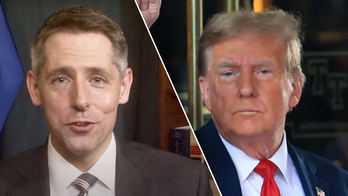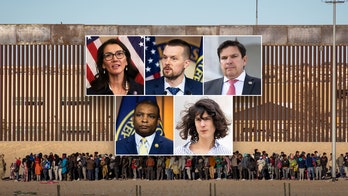Obama's message to ISIS leaders: 'You are next'
President updates coalition campaign against the Islamic State
In what was billed as a major public push of U.S. strategy to defeat the Islamic State, President Obama took only a few minutes at the Pentagon on Monday to outline several recent successes but offered no new plans toward stopping the terror group’s growing, global threat.
“As we squeeze its heart, we'll make it harder for ISIL to pump out its terror and propaganda,” said Obama, following the rare Pentagon meeting with his National Security Council.
The president restated his multi-prong strategy of a massive air campaign, targeting Islamic State leaders and diplomatic efforts to end the civil war in Syria, where the group has flourished.
Obama said the “mission to destroy” so far includes 9,000 airstrikes since the bombing started in September 2014 and a record number of bombs dropped in November.
He said the effort since spring also has resulted in the deaths of at least seven Islamic State leaders, including second-in-command Fadhil Ahmad al-Hayali.
“The point is, ISIL leaders cannot hide, and our next message to them is ‘You are next,’ ” Obama said from the Pentagon briefing room, flanked by Secretary of Defense Ash Carter and several U.S. generals.
Obama said the effort has also helped recapture significant territory that the group has taken in Syria and Iraq, where the group also has a foothold.
The address was part of the president’s week-long, high-profile effort to ease Americans’ fears about ISIS, which also has been associated with the deadly terror attacks in Paris and most recently in California.
Beyond the airstrikes, Obama’s strategy has thus far included military support for Iraqi troops and the deployment of about 50 U.S. Special Forces members in Syria.
The president also this week is slated for a briefing at the National Counterterrorism Center.
Obama’s visits to agencies charged with keeping the U.S. safe follow his Dec. 6 address from the Oval Office that attempted to reassure the public but that critics said failed to do the job.
The address came weeks after 130 people were killed in the Paris suicide bombings and days after the deadly shootings in San Bernardino, Calif., in which a Muslim husband-wife team killed 14 people and wounded nearly two dozen others at a holiday party.
The attackers in both incidents appeared to have at least been inspired by the Islamic State.
FBI Director James Comey said last week that the couple in the California attack had been “radicalized” at least two years before the attack and had bonded over online talk of "jihad" and "martyrdom."
The wife, Tashfeen Malik, 29, came to the U.S. from Pakistan in July 2014 on a fiancée visa, despite apparently expressing her desire publically to commit jihad.
U.S. officials insist there are no new specific and/or credible threats to the United States.
But the apparent lack of warning before San Bernardino has raised concerns about whether the U.S. has a handle on potential attacks, especially during high-profile times such as the end-of-year holidays.
At the National Counterterrorism Center, which analyzes intelligence at its facility in suburban Virginia, Obama planned to address reporters Thursday after a briefing by intelligence and security agencies on threat assessments. Obama receives a similar briefing each year before the holidays.
In addition, the White House scheduled a conference call Monday with religious leaders about ways to fight discrimination and promote religious tolerance.
Obama will also speak Tuesday at the National Archives Museum, where 31 immigrants from Iraq, Ethiopia, Uganda and 23 other nations will be sworn in as U.S. citizens.
Concerns about extremism emanating from the Middle East have also taken center stage in the presidential race.
The Associated Press contributed to this report.





